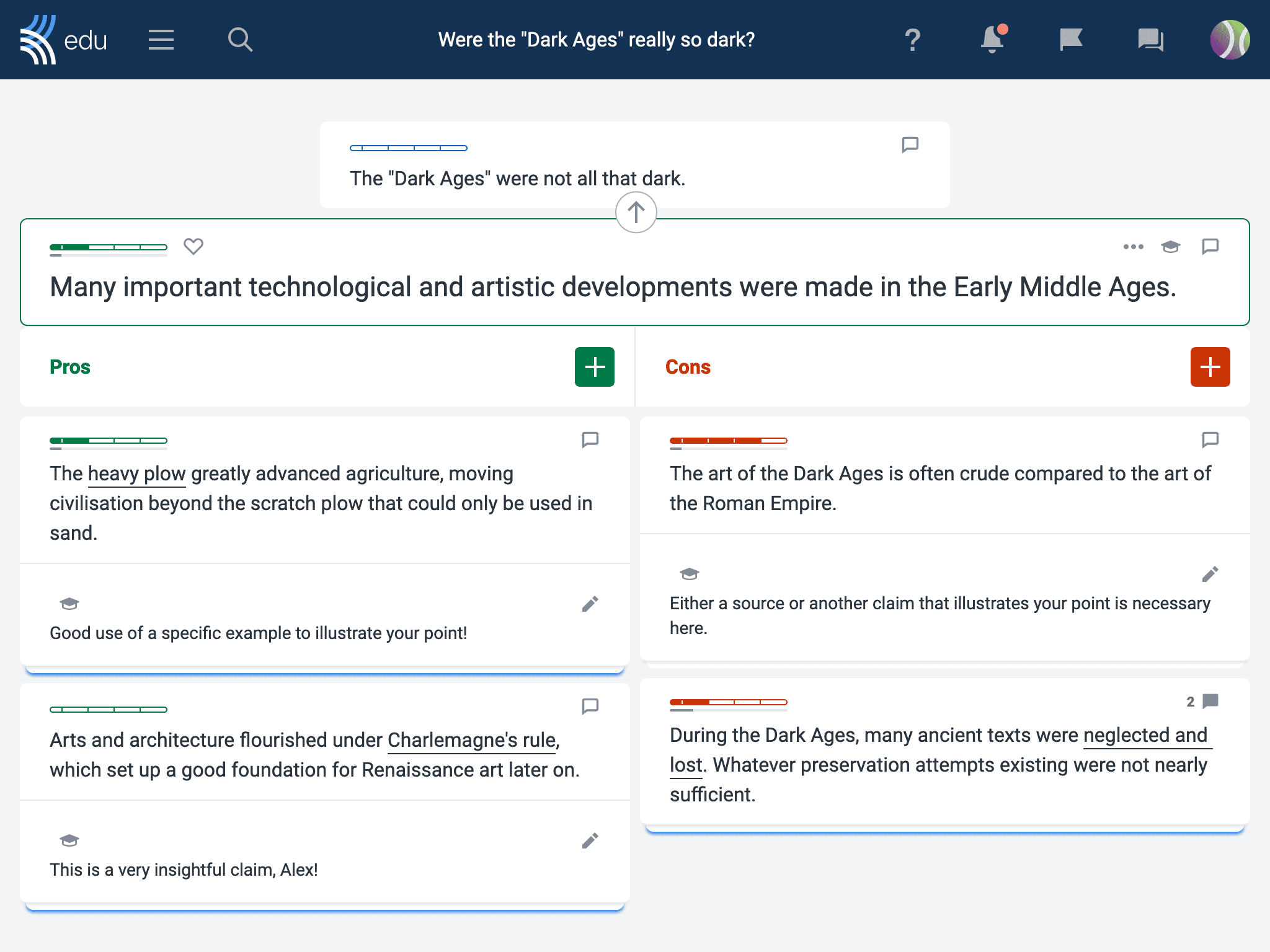For many of us, one mention of the word “respect” releases our inner superstar, as we belt out “R-E-S-P-E-C-T!” Aretha Franklin’s hit song reflected the needs of the average man and woman — everyone wanted respect one way or another. And the same is true in classrooms today, where respect is a cornerstone of successful teaching and learning.
So, let’s examine how to build respectful classroom relationships and explore the ways Kialo Edu can support that.
Tips for building respect between teachers and students
Educators dream of classes filled with eager, respectful students, but the reality is sometimes different! And whilst employing the “teacher look” might be enough to keep the peace, try our suggestions for building respect between teachers and students for a truly positive and productive classroom.
1. Increase students’ engagement in lesson content
To gain students’ respect, engaging them in learning is vital. Hooking students’ attention from the first moment of a lesson and leading them on an inspiring learning journey leaves no time for disrespect. Moreover, students will respect your efforts in designing and delivering engaging lessons.
2. Provide timely, helpful feedback to students
Feeding back with only a tick or a “good work” can quickly demoralize students and damage the teacher-student relationship. Instead, offering targeted, positive, and constructive written or verbal feedback displays respect for students’ endeavors.
In turn, this models good behavior that students will mirror by addressing your suggestions respectfully.
3. Use Kialo Edu to build respect between teachers and students
As a free, purpose-built web app, Kialo Edu is perfectly placed for educators to harness the power of technology to increase student engagement and build respectful teacher-student relationships.
Try using an icebreaker discussion to discover snippets of information about students, such as their preferred after-school activity or favorite science fiction book series. You could try to find out their favorite Use these to personalize future learning, demonstrating that you value each individual.
Alongside icebreakers, the Kialo Edu topic library is packed with curriculum-linked discussions on relevant and authentic issues to immediately engage students. Kialo discussions offer a safe space for you to monitor students respectfully expressing their opinions.
To avoid a “them and us” approach, which can generate disrespect, educators can also participate in discussions to model respectful communication.

Demonstrate that you value students’ discussion contributions by offering positive, respectful, and constructive feedback. Targeting feedback towards the student’s idea rather than the student themselves not only moves learning forward, but also teaches students how to comment and communicate respectfully with others online.
Tips on building respect between students
The classroom may be the only place where students have regular face-to-face interactions with their peers, so it’s important to use this opportunity to practice building respectful student relationships.
1. Provide ample opportunities for collaboration
Helping students to see their class as a team where each of them plays a vital role fosters respectful collaboration. Students can develop trust and empathy and learn to express their ideas confidently and respectfully in a group setting, whilst considering different perspectives.
Students feel valued when their voices are heard, and this translates into positive, respectful relationships.
2. Encourage student self-reflection in their work and behaviors
As well as considering alternative perspectives, students should learn to reflect on their own attitudes and behaviors. By considering why some people earn their respect, and which of their own behaviors might be viewed as respectful (or otherwise), students can learn how to cultivate respectful relationships with their peers.
3. Use Kialo Edu discussions to build respect between students
Maximize opportunities to develop respect through collaboration by grouping students into discussion Teams. Deliberately grouping students with different backgrounds and interests can teach students to embrace different perspectives.
Before discussions begin, ask students to develop a group charter and assign responsibilities to group members based on individual strengths. This can help pave the way for respectful collaboration where every member feels valued.
During discussions, Kialo’s argument mapping structure trains students to think critically about multiple perspectives, encouraging respect for a range of viewpoints. For those students who struggle to understand different outlooks, a role-playing strategy can help.
For example, when discussing whether fair trade schemes are actually fair, students can assume a range of roles, such as farm worker, cooperative owner, or consumer. Stepping into someone else’s shoes in a discussion helps students to understand different perspectives in the classroom too, cementing respectful relationships.
Moreover, the written format of Kialo discussions offers increased opportunities for self-reflection over verbal discussions. Whilst composing claims, students can reflect on how to convey ideas respectfully. Researching supporting sources means students can review their own beliefs in light of evidence, especially in discussions on sensitive and controversial topics.
And by organizing anonymous discussions, educators can teach students how to reflect on and challenge each others’ ideas respectfully. This is a timeless skill that can be applied to other activities — in or out of the classroom!
We know that all you’re asking for in the classroom is “a little respect”, and hopefully that is exactly what you will get by incorporating our ideas into lessons! Maybe you could even try a little karaoke contest to see who belts out the best rendition of Aretha Franklin’s “Respect” to further improve classroom relationships!
Whichever tactic you choose, we look forward to hearing from you at feedback@kialo-edu.com, or on any of our social media platforms.

